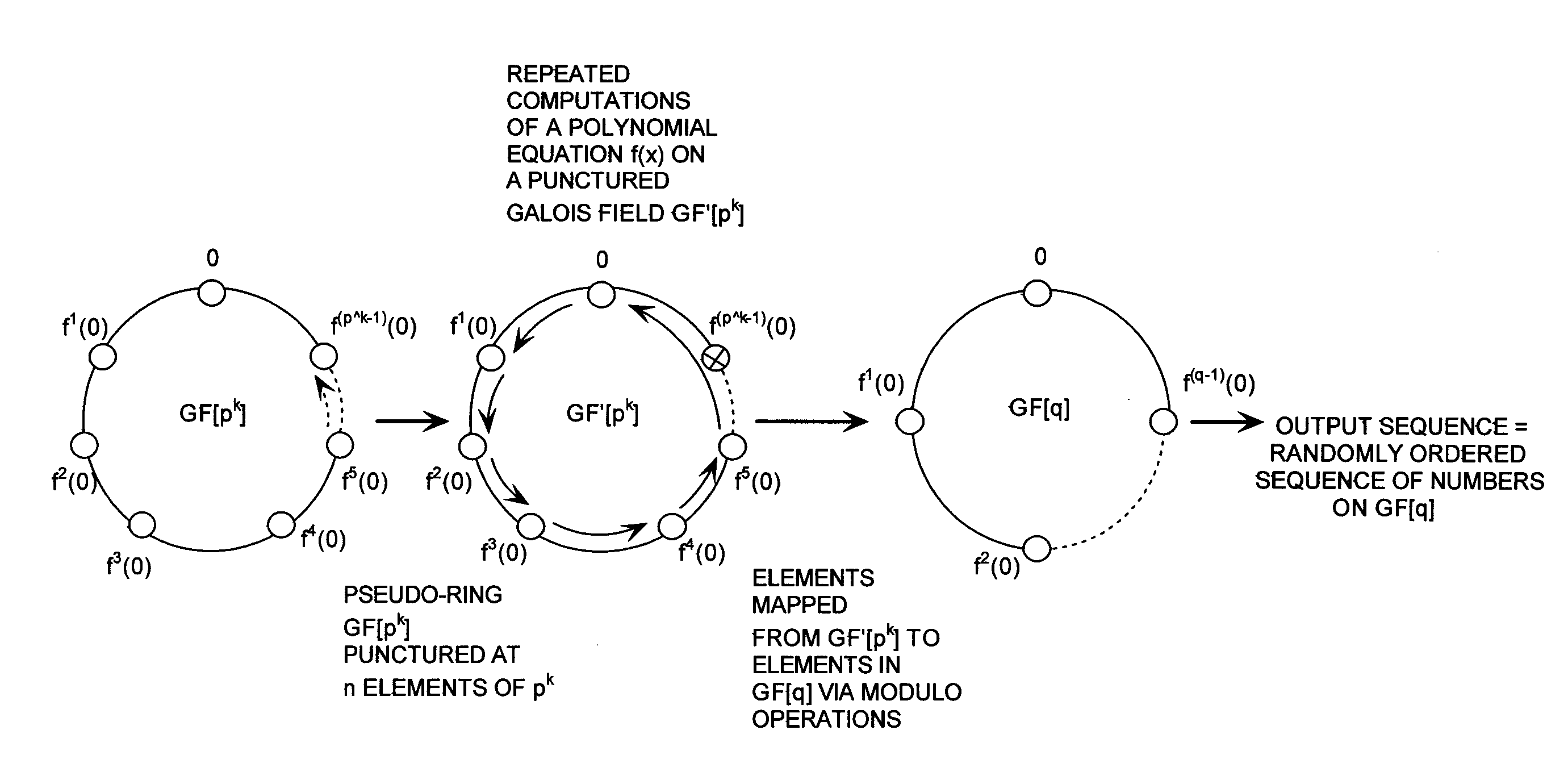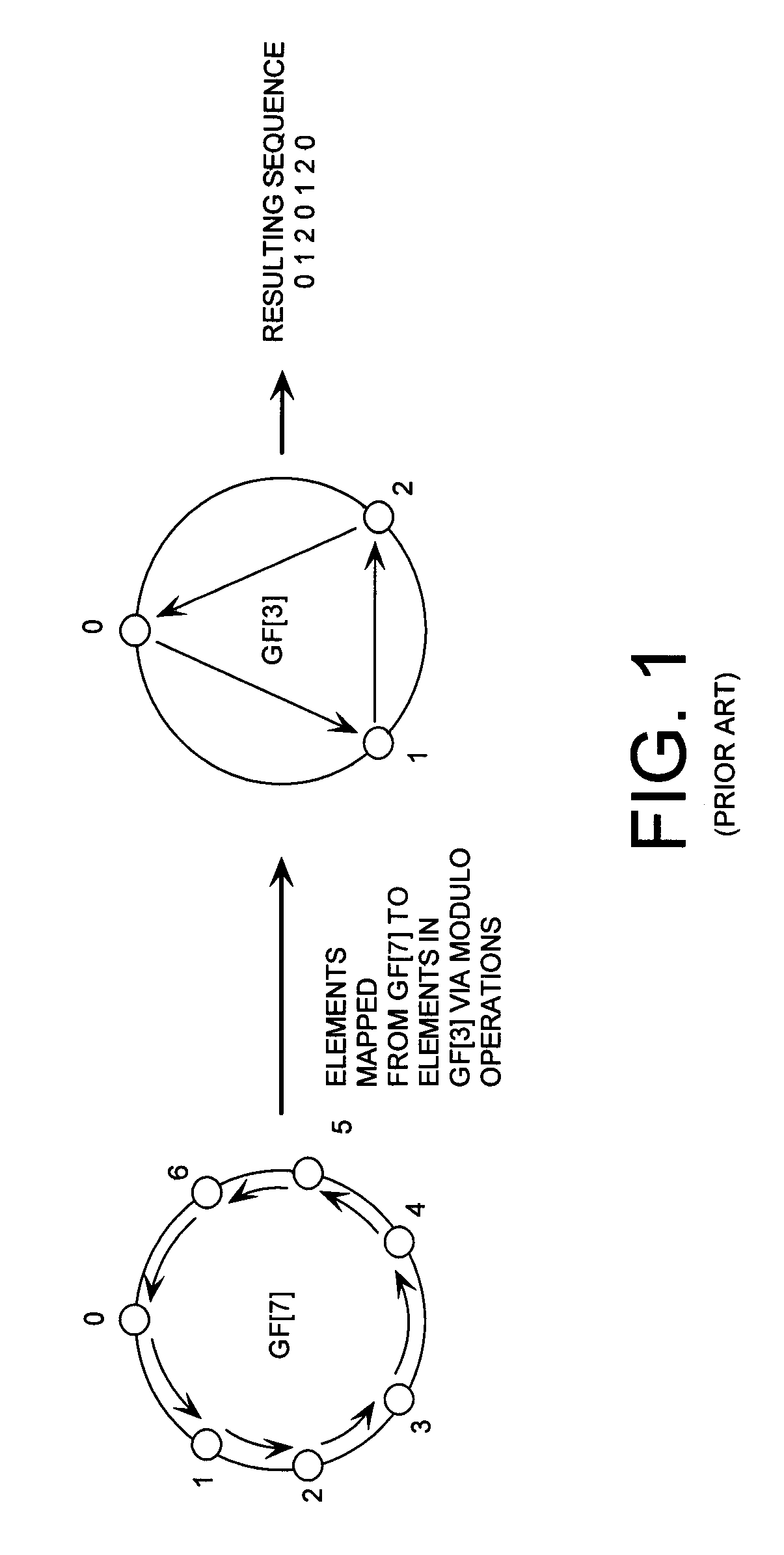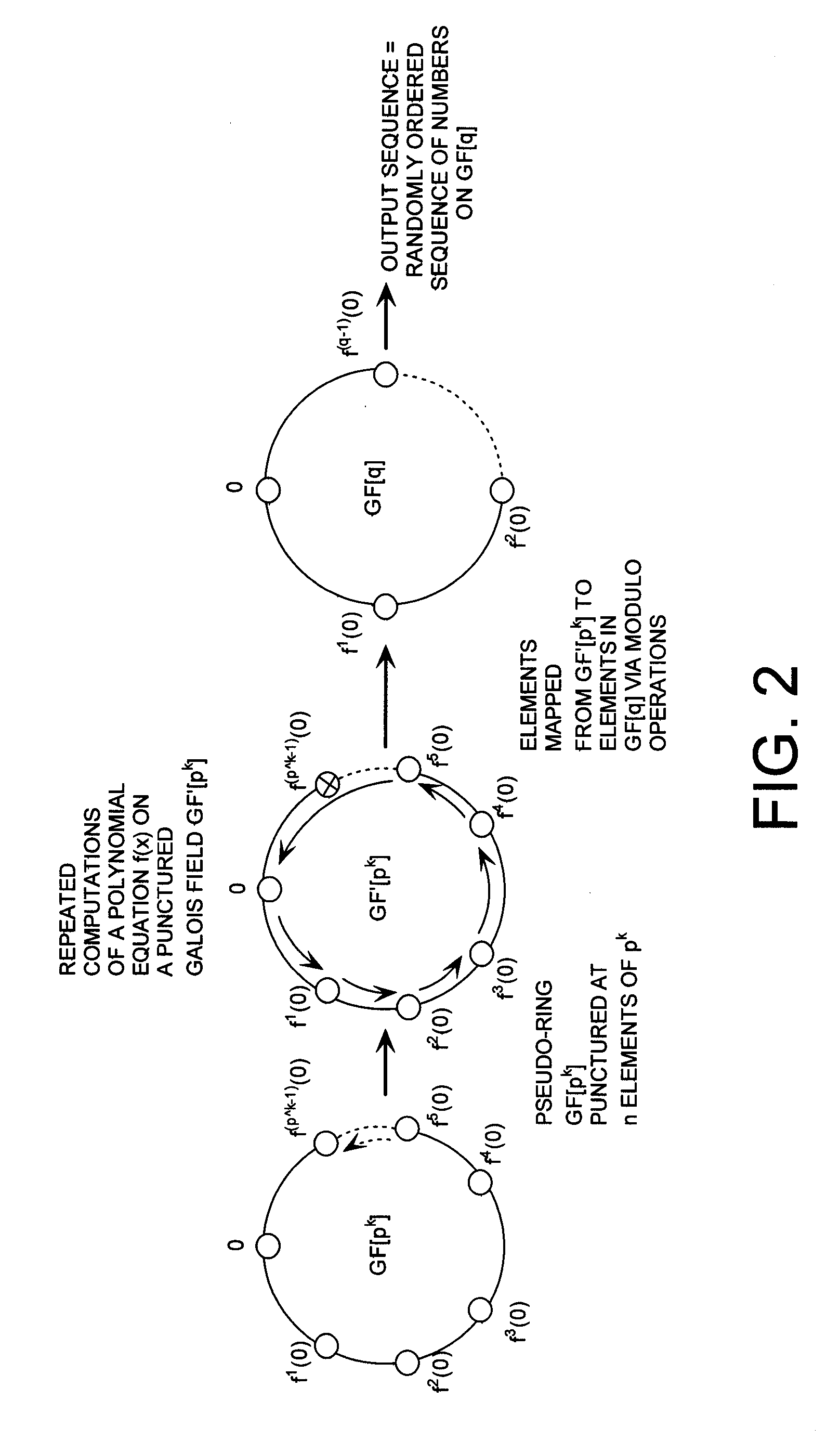Cryptographic system configured to perform a mixed radix conversion with a priori defined statistical artifacts
a cryptographic system and statistical artifact technology, applied in the field of cryptographic systems, can solve the problems of resource intensive lookup table operations performed in the finite or galois field gf[m], suffer from certain drawbacks, and the reliance on the galois characteristic m of the odd-sized ring generator,
- Summary
- Abstract
- Description
- Claims
- Application Information
AI Technical Summary
Benefits of technology
Problems solved by technology
Method used
Image
Examples
example 1
[0038]Referring now to FIG. 3, a ring generator is selected to include repeated computations of the trivial polynomial equation f(x)=x on a Galois field GF[7]. The Galois field GF[7] is a field that contains only a finite number of elements {0, 1, 2, . . . , 6}. The elements of the Galois field GF[7] are mapped to elements in a Galois field GF[3]. In order to guarantee a uniform distribution over a structure defined by the Galois field GF[3], the element of the Galois field GF[7] having a value of six (6) is discarded. In other words, the Galois field GF(7) is punctured at element six (6) so as to have a mapping defined by two (i.e., 6 / 3=2) complete cycles in the Galois field GF[3]. It should be noted that an equivalent puncturing operation could be obtained by choosing to puncture GF[7] at element zero (0) or element three (3) instead of element six (6).
[0039]In this regard, it should be appreciated that the number of cycles in the Galois field GF[3] is defined by the previously di...
example 2
[0041]A ring generator is selected to include repeated computations of a polynomial equation f(x) on a Galois field GF[233]. The Galois field GF[233] is a field that contains only a finite number of elements {0, 1, 2, . . . , 232}. The elements of the Galois field GF[233] are mapped to elements in a Galois field GF[5]. In order to guarantee a uniform distribution over a Galois field GF[5], thirteen (13) elements of the Galois field GF[233] are discarded. Chosen arbitrarily, the last thirteen (13) elements are discarded via puncturing. In other words, the Galois field GF[233] is punctured at element two hundred twenty (220) through element two hundred thirty two (232) so as to have a mapping defined by forty-four (i.e., 220 / 5=44) complete cycles in a Galois field GF[5].
[0042]In this regard, it should be appreciated that the number of cycles in the Galois field GF[5] is defined by a mathematical Equation (2).
NOC=p1 / p2 (2)
where NOC is the number of cycles in the Galois field GF[5]. p1...
PUM
 Login to View More
Login to View More Abstract
Description
Claims
Application Information
 Login to View More
Login to View More - R&D
- Intellectual Property
- Life Sciences
- Materials
- Tech Scout
- Unparalleled Data Quality
- Higher Quality Content
- 60% Fewer Hallucinations
Browse by: Latest US Patents, China's latest patents, Technical Efficacy Thesaurus, Application Domain, Technology Topic, Popular Technical Reports.
© 2025 PatSnap. All rights reserved.Legal|Privacy policy|Modern Slavery Act Transparency Statement|Sitemap|About US| Contact US: help@patsnap.com



